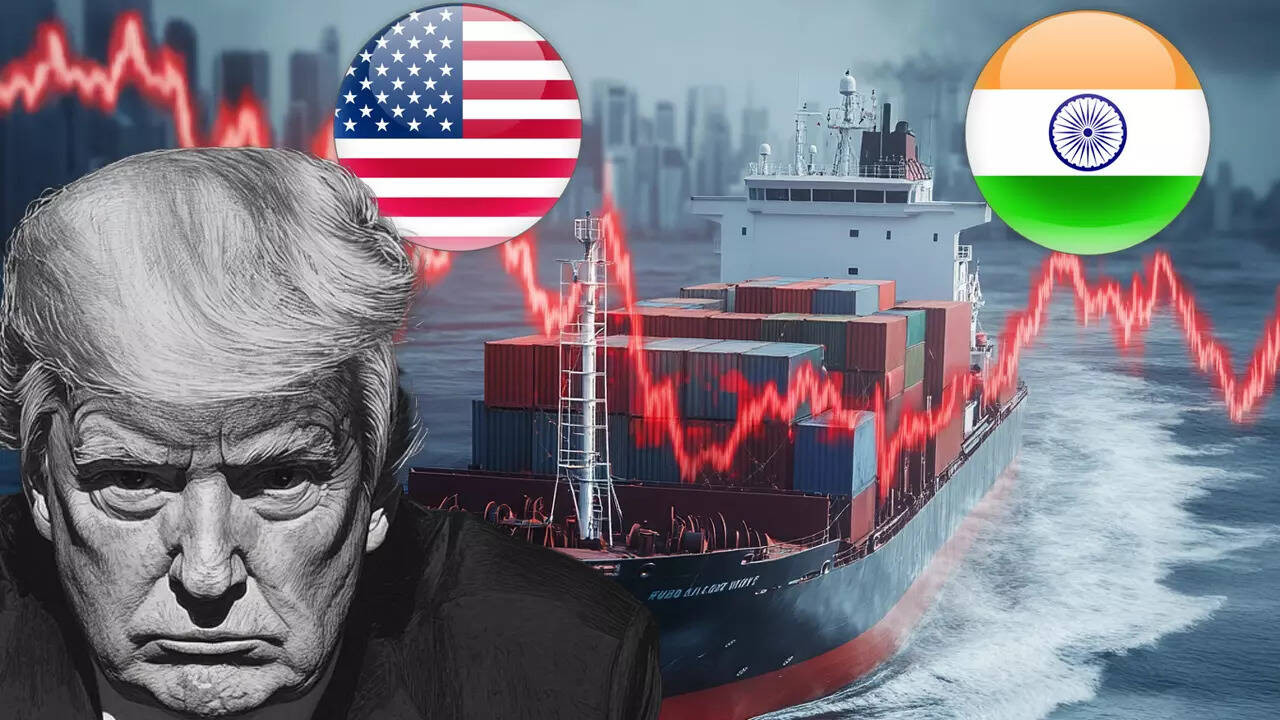Barclays warns that US President Donald Trump’s 50% tariffs pose a ‘serious threat’ to 70% of India’s exports to the US. While smartphones and pharmaceuticals are currently exempt, key sectors like electrical machinery and gems & jewellery face significant challenges. India is exploring strategies such as GST rate reductions, reactivating credit schemes, and diversifying export markets through FTAs to mitigate the impact.
Navigating the Choppy Waters: How Trump’s Tariffs Could Reshape India’s Export Landscape
The global trade winds are shifting once again, and India finds itself potentially navigating some turbulent waters. With Donald Trump’s renewed focus on tariffs, particularly on goods entering the US market, a significant portion of India’s exports could face headwinds. Let’s dive into what this means for Indian businesses and the broader economy.
A Significant Chunk of Exports at Risk
Barclays recently released a report highlighting that a substantial 70% of India’s exports to the United States are vulnerable to these potential tariff hikes. That’s not a small number. It represents a massive portion of the goods and services that contribute significantly to India’s economic engine. This potential threat throws into sharp relief the dependence many Indian industries have on the American market and underscores the urgency to diversify trade relationships. The ripple effect of such tariffs could impact various sectors, from textiles and engineering goods to pharmaceuticals and agricultural products.

Why India Could Face a Bigger Challenge
One of the core concerns is how India stacks up against its competitors. Other nations, potentially those with existing free trade agreements or more favorable diplomatic relationships with the US, might be better positioned to weather the storm. This puts India at a distinct disadvantage. While other countries could see tariffs as a manageable hurdle, for India, the impact could be disproportionately larger, potentially impacting growth forecasts and business investments.
Imagine two companies selling similar products to the US market. One is based in a country facing a 10% tariff, while the other, based in India, faces a 25% tariff. Suddenly, the Indian company is at a significant price disadvantage, making it harder to compete and potentially losing valuable market share.
Looking Beyond the US: Diversification is Key
While the situation appears concerning, it also presents an opportunity for India to re-evaluate its trade strategies. Diversifying export destinations has never been more critical. Focusing on strengthening trade ties with other major economies, such as those in Europe, Asia, and Africa, could mitigate the impact of potential US tariffs. This doesn’t mean abandoning the US market altogether, but rather strategically reducing reliance on it.
Think of it like this: relying solely on one customer for the bulk of your income is risky. If that customer leaves, your business suffers. Diversifying your customer base ensures resilience and long-term stability. Similarly, diversifying export markets provides a buffer against economic shifts and policy changes in any single country.
The Road Ahead: Strategic Policy and Adaptation
The Indian government and businesses need to be proactive in navigating this evolving landscape. This includes engaging in constructive dialogue with the US administration, advocating for fair trade practices, and exploring alternative trade agreements. Simultaneously, bolstering domestic industries through infrastructure development, skill enhancement programs, and streamlined regulatory processes is crucial for enhancing competitiveness on a global scale. We have covered similar risks to the Indian economy in our post about [the impact of global inflation on India’s growth](internal-link).
Furthermore, businesses need to adapt by improving efficiency, investing in innovation, and exploring new product lines that cater to a wider range of international markets. Embracing technology, such as e-commerce platforms and digital marketing, can also open doors to new customers and reduce dependence on traditional export channels.
A Call to Action: Building a Resilient Future
The prospect of higher tariffs on Indian exports to the US presents a significant challenge, but also a crucial opportunity for growth and adaptation. By proactively diversifying export markets, strengthening domestic industries, and engaging in strategic policy dialogue, India can mitigate the potential impact and build a more resilient and sustainable economic future. The path ahead may require agility and strategic thinking, but with the right approach, India can navigate these choppy waters and emerge stronger on the other side.







